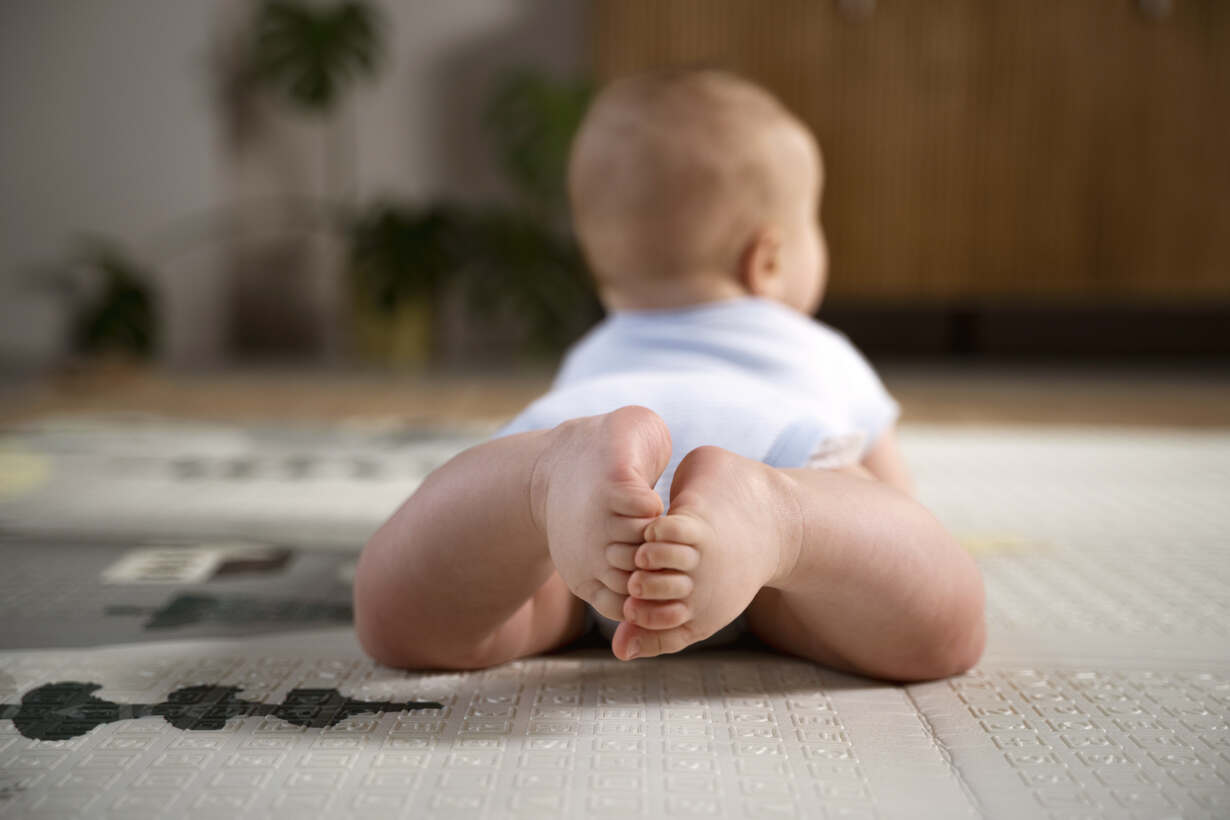Baby are naturally curious beings, constantly exploring their environment and bodies. One behavior often catches parents off guard is when a Baby Looking Between Legs This seemingly unusual action might raise questions and concerns, but rest assured, it is a normal part of early development. This blog will analyze the reasons behind this behavior, its developmental significance, and how parents should respond.
Why Do Baby Looking Between Legs?

1. Self-Discovery and Curiosity
Babies constantly learn; one of the earliest things they discover is their body. As they grow, they explore different parts of themselves, including their legs and other body areas. This curiosity is a crucial part of their cognitive and sensory development.
2. Sensory Stimulation
Touch is one of the direct ways babies learn about their surroundings. When Baby Looking Between Legs they often engage in sensory exploration. This activity helps them understand their body, spatial awareness, and coordination.
3. Observation and Imitation
Babies learn by observing others. They often mimic the movements and behaviors of caregivers or siblings. If they notice someone bending over or engaging in similar actions, they might imitate it to understand the world around them.
4. Physical Development and Coordination
As babies develop motor skills, they experiment with different movements. Looking between their legs could improve balance and coordination or test their physical abilities. Some theories suggest that when babies position themselves in such a way, they receive sensory input that helps them develop better control over their muscles.
Developmental Stages and This Behavior
Newborn Phase (0-3 months)

At this stage, babies primarily focus on basic survival needs such as feeding and sleeping. Their reflexes, such as grasping and rooting, indicate early curiosity, but they are not yet engaging in complex exploration, like looking between their legs.
Infancy (3-12 months)

Babies begin to develop motor skills and explore their bodies more actively. They might start by grabbing their feet, rolling over, or noticing different body parts. Around this time, they may also experiment with bending over and Baby Looking Between Legs.
Toddlerhood (1-3 years)

As toddlers become more mobile, they engage in more playful and exploratory behaviors. At this stage, Baby Looking Between Legs is often part of their energetic movements and curiosity about how their body functions.
How Should Parents Respond?
1. Stay Calm and Observant
If you notice your baby looking between legs, there is no need to panic. This behavior is typically harmless and a sign of healthy development. Avoid reacting with fear or confusion, as this can create unnecessary anxiety for both you and your child.
2. Encourage Safe Exploration
Babies learn through exploration, so it is essential to provide a safe environment. Encourage your baby to explore their body naturally by providing interactive toys, sensory play, and opportunities for movement.
3. Introduce the Concept of Privacy
As your baby grows, you can slowly introduce the idea of privacy and appropriate behavior. Use simple language to explain that certain activities are best done in private spaces, laying the foundation for future social understanding.
4. Offer Distractions When Necessary
If your baby engages in this behavior publicly or inappropriately, gently redirect their attention to a toy, book, or another activity. Distraction can be an adequate way to drive behavior without making them feel self-conscious.
When to Be Concerned
While Baby Looking Between Legs is generally harmless, there are certain situations where you may want to consult a pediatrician:
- Unusual Spinal Curvature – If you notice an abnormal bend or lump in your baby’s spine while in this position.
- Signs of Pain or Discomfort – If your newborn appears distressed or cries when engaging in this behavior.
- Repetitive or Obsessive Behavior – If the action seems compulsive or interferes with daily activities.
Conclusion
Baby Looking Between Legs is a natural and normal part of development. It signifies curiosity, sensory exploration, and growing motor skills. As parents, it is essential to foster a safe and validating environment where children can explore and learn without fear. You can guide your child through this fascinating growth stage by staying calm, encouraging healthy curiosity, and setting gentle boundaries.











